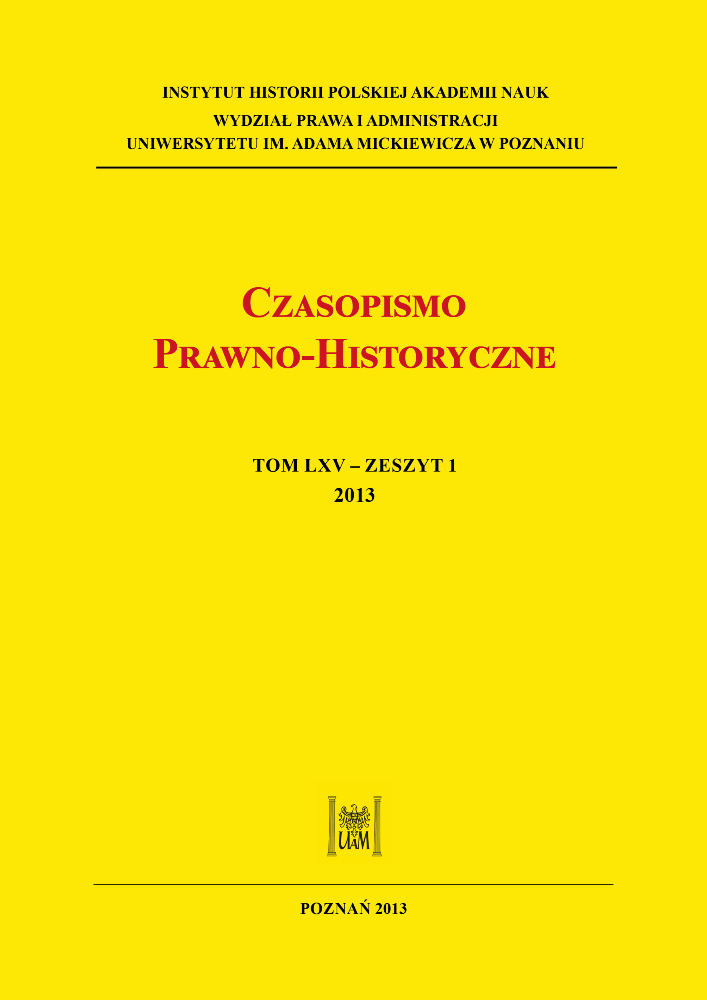Abstrakt
Usul al-fi qh is one of the disciplines of fiqh (the science of religious law in Islam), called for simplicity the theory of law, but actually comprising elements – from the Western perspective – of both theory and philosophy of law, theology, logic, epistemology and linguistics. Usul-al-fi qh literature was written until the end of the classical period in the history of Islamic law, i.e. until roughly the 19th century when the world of Islam came into contact on a larger scale with Western civilisation. As a result, Islamic law entered its modern era. The fi rst works on the theory of law (which have not survived or survived only in fragments) were written in the 10th century – at a time when legal practice had already been well established. A stimulus for the emergence of the theory of law most probably came from Iraq where the intellectual traditions of antiquity were still alive, especially Greek philosophical rationalism. It can be claimed that the theory of law developed by combining rationalistic and traditionalistic ideas in Muslim legal thought. Being an embodiment of this merger, the theory of law owed its beginnings to the community of Baghdad jurists gathered around the Shafi ʻte Ibn Surayj (d. 918). In the legal Sunni tradition, the theory of law was meant as a science of the sources of divine laws (rules), bringing order to human reality, and the methods of deriving them from revelation. These were usul – literally meaning ‘roots/foundations’ (of fiqh). They were made up of the revelation included in the Quran and the Sunna of the Prophet Muhammad, as well as a consensus of the mujtahids (ijmaʻ) and the method qiyas (most often understood as an analogy). These were the four basic ‘sources’ of law. There were also the so-called controversial ‘sources’ that were not recognised by all the schools of law but which comprised juristic preference (istihsan), custom (urf) or the principle of blocking actions that might lead to evil (sadd adh-dhara’iʻ). The theory of law was meant to serve the mujtahids (jurists taking up ijtihad or individual juristic effort aimed at deriving a rule for a specifi c case in reliance on the texts of the Quran and Sunna, rules of their interpretation and specifi c methods of juristic reasoning). In interpreting the sense of the texts, the concept of qara’in – contextual indicators – was adopted without, however, developing rules for their identifi cation. For this reason, the theory of law made it practically possible to justify individual views, which were recognized as following from the intention of the revealed texts. Because of the conviction about the divine origins of Islamic law (Shariʻa), a distinctive feature of usul al-fi qh was its embedding in a theological structure with which it made up an organic whole. Moreover, the theory of law was a highly inconsistent discipline because of the selective nature of borrowings from Greek logic and philosophy, adoption of various methods of juristic reasoning, or, fi nally, various fashions of presenting content in individual works. In turn, the common and constant features of this cumulative tradition of usul al-fi qh, which made the discipline a unity, ollowed from resting the whole legal system on four basic sources of law, developing the concept of abrogation and interpreting the sense of the Quranic and sunnaic utterances. In the early 20th century, with ever stronger voices heard in juristic-theological discourse, advocating the adoption of the rationalistic position, a multitude of proposals were put forward to review the classical theory of usul al-fi qh so that it could be practically used when faced with the needs of modern society.
Licencja
Copyright
© 2013 Wydział Prawa i Administracji UAM w Poznaniu
OPEN ACCESS




